
Purchase Tickets
Let’s Talk About Paper III
September 13, 2011

I?d like to talk a little about books now. Books are complex objects. They?re made from a variety of materials that behave in varying ways as they age. Paper or parchment can be used for the pages (or leaves). Wood or pressed cardboard can be used for the book boards. Cloth, thread, glue and leather all come together to make an integrated three dimensional artifact (with moving parts!) that are subject to use for many years. I mean, you pick up a book and you want it to be a book, and move like a book – you expect it to.
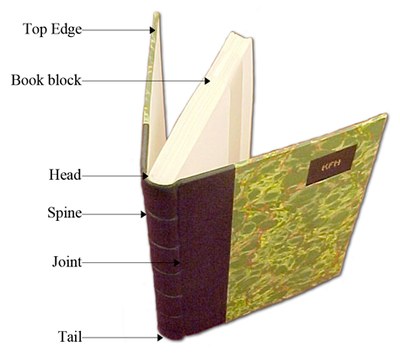
I made this little book. It?s never been used but for these slides, but the parts of a book include the top edge, the book block (pages or leaves) the head, tail, spine and joint (where the book boards join the binding)
There?s more …
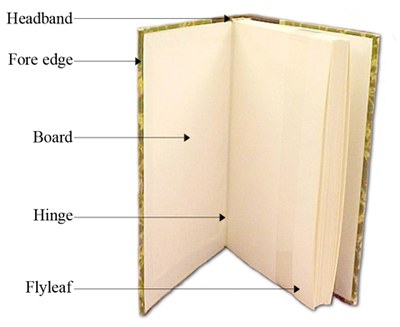
The fore edge, boards, hinge (inner place were the book board meets the binding) headband at the top and the flyleaf. Called the flyleaf because that?s where the pages move or fly?. Nice.

Most book structures rely on sheets of paper that are folded together. These are called various things signatures or quires. These are nested and stacked. The nested pages are sewn through the center fold with thread.
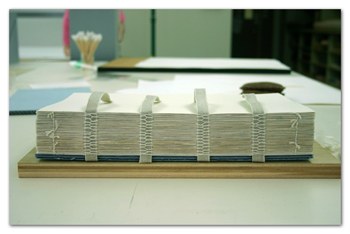
Stacked signatures are sewn vertically along the folded edge with thread. This sewn structure is the binding. The binding is usually lined with a fabric or paper, and the lining is then attached to the book boards.
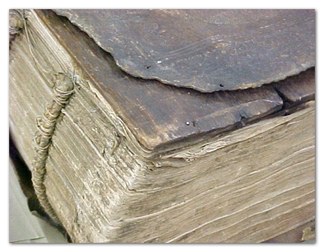
The nature of composite objects like books makes them vulnerable to damage as they are used. Everything has different strengths and that will affect your ability to use the book and preserve it.
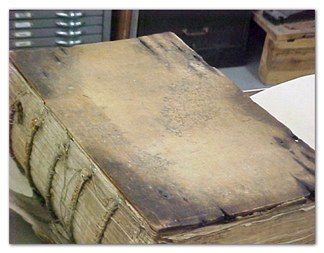
Just so you think about this a little bit more wood book boards are subject to warping with high humidity.
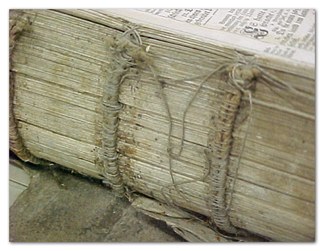
Linen and cotton used for sewing is strong when new, but fibers weaken with age. Breaks in the sewing result in pages no longer in perfect alignment with other pages in the book.
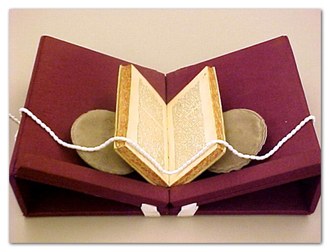
Some books are tightly bound and just don?t open well. Resist the urge to crack? the spine gee, the nuns taught us that! which can break binding threads, misalign signatures and cause pages to fall out. Provide support hey, a pillow will do! to help prevent damage. You can gently prop the pages back with soft weights _hmm where to get? Try this buy some infant socks and fill them lightly with dry beans; sew them up and you?ve got cute weights. If you like frogs you can get the froggie ones … no really, they?ll work!
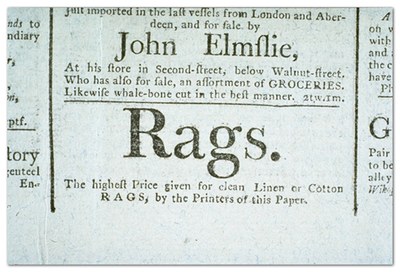
While books are complex, the single element that most affects the long life of any book or paper artifact is the quality of the paper used. Acidic paper makes future repairs to pages and binding difficult. Because the paper is so brittle, simple mends to tears in paper are likely to tear along the mended edge. Good quality paper is very robust and will withstand the rigors of time and use very well. Still, I?d like to talk about how to protect any object from harm in the next discussion.
____________________








